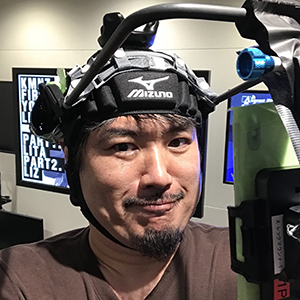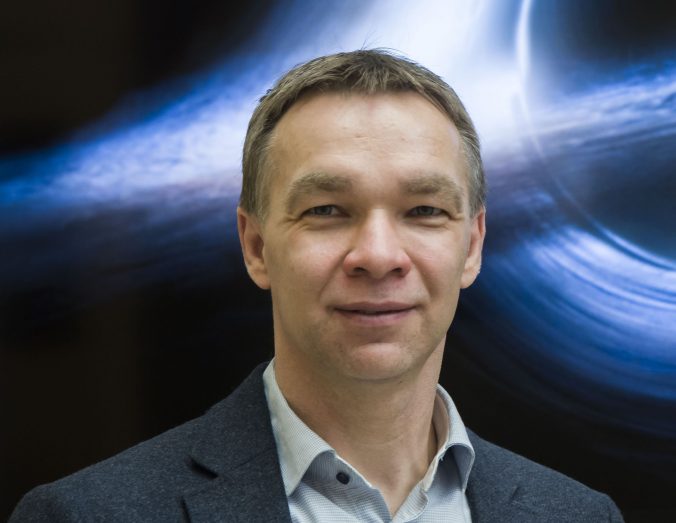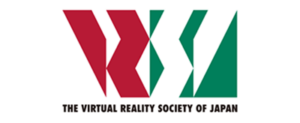Keynote 1: The Golden Rule Embodiment Paradigm – Using Virtual Reality to Reduce Aggressive Behaviour
Abstract Virtual Reality is often thought of as an empathy machine. The idea is that simply using VR to place people in the viewpoint of a member of a disadvantaged group will improve their empathy and therefore reduce harmful behaviour. We present evidence that suggests that this might not be the case, and indeed that the ‘empathy machine’ approach might make things worse. Instead we put forward a new paradigm that we refer to as the Golden Rule Embodiment Paradigm, that relies on a practical implementation of the ethical rule ‘Do not do to others that which you would not want done to yourself’. This will be illustrated by two case studies: diminishing sexual harassment of women by men, and reducing racially motivated police violence.

Mel Slater is a Distinguished Investigator at the University of Barcelona in the Institute of Neurosciences, and co-Director of the Event Lab (Experimental Virtual Environments for Neuroscience and Technology). He was previously Professor of Virtual Environments at University College London in the Department of Computer Science. He has been involved in research in virtual reality since the early 1990s, and has been first supervisor of 40 PhDs in graphics and virtual reality since 1989. He held a European Research Council Advanced Grant TRAVERSE 2009-2015 and has now a second Advanced Grant MoTIVE 2018-2023. He is a Research Award Winner of the Alexander von Humboldt Foundation in 2021. He is Field Editor of Frontiers in Virtual Reality, and Chief Editor of the Human Behaviour in Virtual Reality section. His publications can be seen on http://publicationslist.org/melslater. He is one of the Founders of the company Virtual Bodyworks S.L.
Keynote 2: Since VR Entertainment, dawn of XR Metaverse – Development and Deployment for next generation of human being.
Abstract This keynote will give an opportunity to VR researchers to think about the history of VR and the future since VR2.0 to 4.0. Speaker had experience developing new VR entertainment experiences and researchers since 1997. It opens the fun, interests difficulties, and importance of entertainment experience and theoretical research. Audience will have the current state of arts in industrial research of XR SNS company REALITY, Inc. and future prospects in terms of research, development, and social deployment with a big vision and smart live demos.

Akihiko Shirai is the director of the GREE VR Studio Laboratory. He received his Ph.D from the Tokyo Institute of Technology in Japan in 2004 and was a R&D researcher at NHK-ES in Japan, focusing on the next generation’s TV production environment, and ENSAM Presence & Innovation Laboratory in France in 2004 to 2007 for R&D of a VR theme park development project with some significant research projects including publications at ACM SIGGRAPH and IEEE VR. He worked for National Museum of Emerging Science and Innovation (Miraikan), Tokyo Japan, as a science communicator and exhibition planner for 2008 to 2010. From 2010, he is working in Information Media, Kanagawa Institute of Technology (KAIT) as an associate professor. The motto of his work is “Creating people who creates”. He developed systems such as the Simultaneous multiplex imagery system “Scritter”, “ExPixel” and “ExField”, Manga immersive system “Manga Generator”, nursery VR entertainment “Real Baby – Real Family”. His work has been awarded by the goverment of Japan, academia, and game industry. Since June 2018, he revived to game industry again as a research director to launch “GREE VR Studio Laboratory” in REALITY, Inc. a family of GREE, Inc., which promotes a new industrial research for vTuber (Virtual YouTuber, virtual persona, virtual artist) enhancement and exploring XR live entertainment. Here he contributed to develop “VibeShare”, a suite of virtual live enchanting technologies to share non-verbal interaction in XR live entertainment. He also was a visiting Professor at Digital Hollywood University Graduate School and is the vice president of the society for Art and Science as well as ambassador and Board of Directors at Laval Virtual.
Keynote 3: New astronomy, new challenges, new solutions
Abstract Astronomy is undergoing a new technological challenge. For the first time in its history, modern day telescopes and instruments can collect much more data than one can possibly store. As a discovery science, there is a risk of missing the new unexpected but potentially disruptive discovery that may change our view of the Universe that we live in. Again, astronomers therefore have to embrace new technology and new solutions to make best usage of the amazing new ways to explore space. More than ever, they require close interaction with computer scientists to find new ways of inspecting, visualising and thereby analysing our extraordinary large data streams.

Michael Kramer graduated Physics and obtained a PhD at the University of Bonn, Germany. He was a staff astronomer at MPIf, a Max-Planck Otto-Hahn fellow at the University of California at Berkeley, Lecturer, Senior Lecturer and Reader at the University of Manchester. He is Head of the Pulsar Group of the Jodrell Bank Observatory/Jodrell Bank Centre for Astrophysics and Associate Director of the Jodrell Bank Observatory. In 2009, he was appointed as Director at the Max-Planck-Institute for Radio astronomy in Bonn. He is currently a member of the Scientific Council of the European Research Council and a number of other advisory committees. His expertise lies in data intensive radio astronomy with a focus on the observations of pulsars for experimental tests of gravitational physics. Michael Kramer has published over 500 refereed publications in scientific journals, incl. more than 20 publications in Science and/or Nature. With over 40,000 citations, he has an h-index of 99 as measured by NASA’s ADS in March 2021. MK also published a similar amount of conference proceedings, one authored and one edited book, more than 20 monographs or invited review articles and a number of popular science magazine articles.




